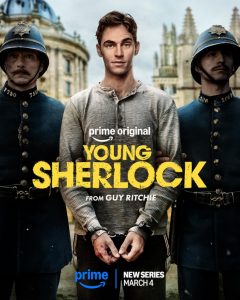
“Did you guys hear about those people who lived in the mall?“
The setup for Jeremy Workman‘s latest documentary is the stuff of urban legend: Eight artists (led by Michael Townsend) turn an empty cinder block cavern in the bowels of the Providence Place Mall into a cozy, livable apartment over the course of four years, entirely undetected. Equal parts guerilla performance art, creative protest, and prank, the mall apartment became a home base for a group of artists caught in the crosshairs of a wave of gentrification that would transform their city. In Workman‘s low-key treatment of this tale of creative misadventure, the story is warmhearted and meditative, guiding the viewer through the nooks and crannies of the kind of grand socioeconomic narrative typically told on a much broader scale – and makes you eager to see where each secret passage will lead.
“A Very Specific History of New England”
When viewed from the abandoned mill buildings of Eagle Square, for Townsend and his then-wife Adrianna, the Providence Place Mall looked like “an ogre, and we’re the townspeople with pitchforks.” Secret Mall Apartment uses the peculiar piece of real estate at its heart to document the history of the “Providence Renaissance,” a series of revitalization projects under (in)famous Mayor Buddy Cianci in the late nineties and early aughts designed to attract arts and culture back to the city after decades of deindustrialization left large swaths of the downtown dark. The creation of the mall in what one historian describes as “the skeleton of the Industrial Revolution” for the sake of an “artist-friendly city” ironically came at the cost of some artists’ communities reliant on the city’s empty buildings and the large, free spaces they provided. Thus, for artists like Townsend, the mall – located barely a mile from Fort Thunder, one such destroyed hub – came to represent the broader project of gentrification and development engineered upon their exclusion.
source: SXSW Film Festival
The film, then, which intercuts voluminous low-fi footage shot by the artists during their extended mall residency with rich present day interviews and archival clips, tracks the project as a form of resistant “microdevelopment”: In the face of unresponsive development that overlooks the needs of their pre-existing community, Adrianna argues, these artists take advantage of their organic, practical knowledge as residents of the area. In one project, Townsend creates an installation out of a series of abandoned drainpipes. By exploring the new mall as it was being constructed (before it was considered “usable” space by its owners), he and his friends were similarly able to subvert this paradigm of privately owned “public space,” finding their own “underutilized space” to develop within it, like dandelions growing out of cracks in the sidewalk.
Artists in Residence
This thoughtfully scrappy tact lends a warmth and silliness to the proceedings that emanates in equal measure from the community being documented. The logistics of carrying an enormous china cabinet from the Salvation Army up a nearly vertical metal ladder and through a crawl space, for example, holds up a funhouse mirror to HGTV home renovations (the “dreams the mall sells”) and ties notions of security, comfort and belonging to living a “teenage mall hang existence” as a playful act of vigilante reclamation of space.
The film’s central pleasures come from simply watching this tight-knit bunch of former skater punks and RISD-kids play house, DIY style, in part just to see how far their project can go; “If we could get mail here? That would really be something…” Townsend muses at one point. And the practicalities involved make Secret Mall Apartment a true tall tale. Some of the film’s momentum does get lost documenting the later years of the project, when the team stopped filming their existence in the apartment and Workman shifts his focus onto the artists’ other works, namely a series of location specific, temporary murals in other cities. While these pieces help flesh out Townsend’s broader practice and art-life philosophy, they lack the rich historical grounding, thematic resonance, and genuine intimacy of the mall apartment itself–– which, in this context, becomes the ultimate site-specific performance art, a microcosm of Providence’s inner life.
source: SXSW Film Festival
On a related note, for all its intimate views of the building, the film’s stance on the Providence Place Mall (a staple of my own childhood at this exact period in time, a fact that made the grainy footage of favorites like the Pizzeria Regina or the Regal Cinemas a particularly nostalgic viewing experience) remains curiously vague: The American mall, a symbol of bland consumerist excess in the aughts, has been on the decline for decades, taking on new roles in its twilight years including in some cases as a vital community space for a diverse range of people, the precise thing the artists wished it could be. While the fluidity of space at the center of the artists’ mall project could have made for an interesting point of comparison with these dynamics, unfortunately, the fate of the mall itself is used more as a punchline.
Nevertheless, the subjects’ humor and affection for each other, their work, and their hometown holds the film together through it all, leaving the film with a mellow, almost cozy impression that’s deeply winning. This is the kind of urban legend that makes people light up when they share it.
“Did you guys hear about those people who lived in the mall?” If you have, don’t you want to meet the people that did it? If you haven’t, don’t you want to now? Like any really good yarn, Secret Mall Apartment has one truly weird story to tell you.
Does content like this matter to you?
Become a Member and support film journalism. Unlock access to all of Film Inquiry`s great articles. Join a community of like-minded readers who are passionate about cinema – get access to our private members Network, give back to independent filmmakers, and more.










